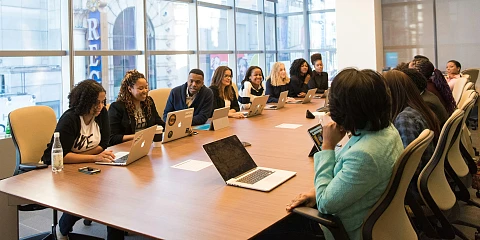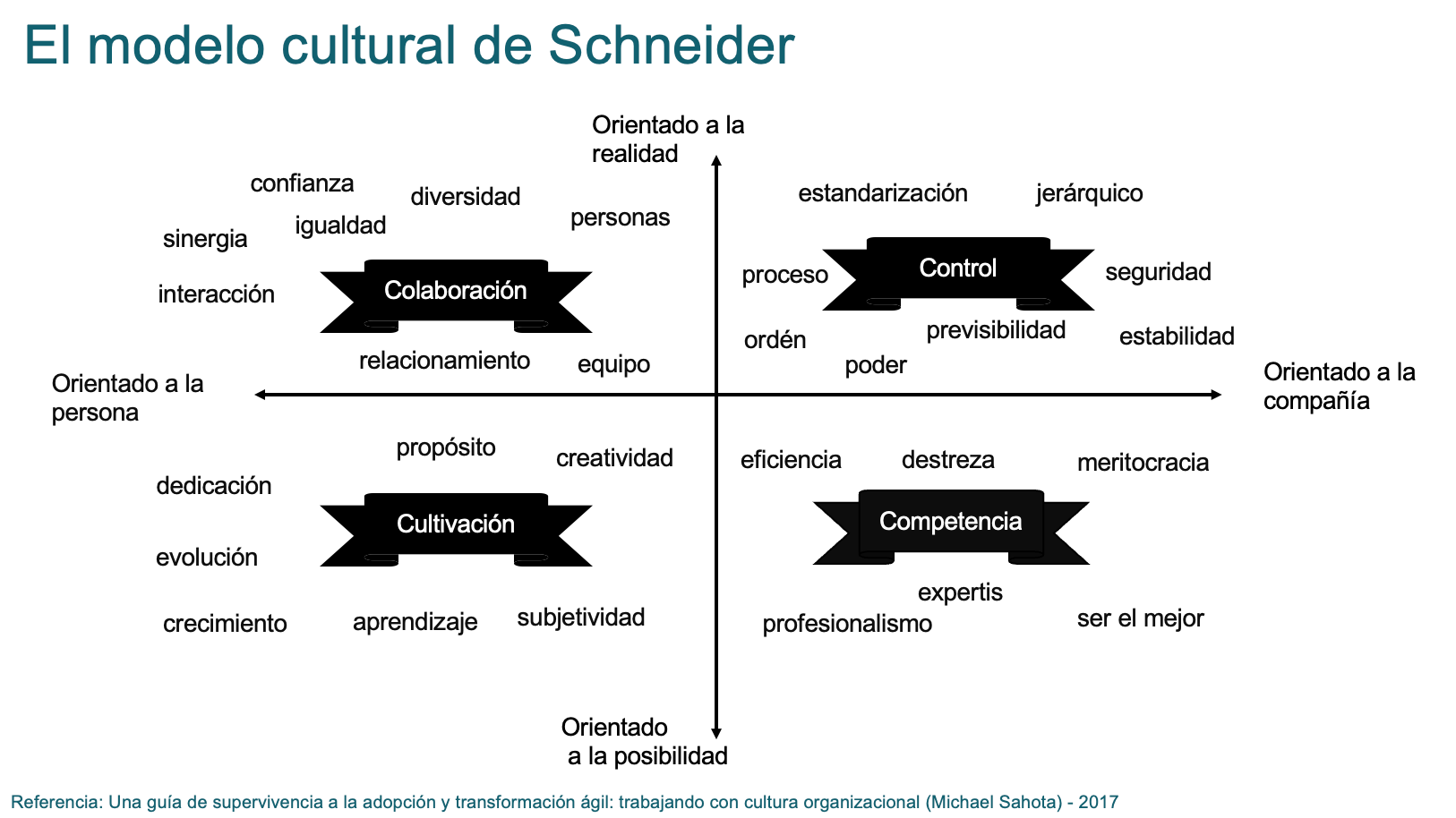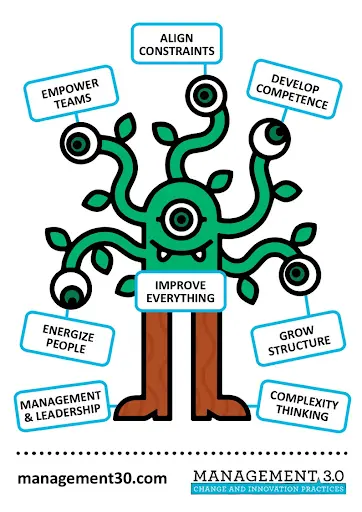
Diversity and Agility as keys to improve your organization
August 20, 2024
The ability to quickly adapt to change is essential for success, especially today
In this article, we will explore how diversity in organizations can be a key driver for achieving the much-needed agility. We will discover why having people with different backgrounds, experiences, and perspectives not only enriches the work environment but also enhances a company's ability to respond to challenges efficiently and creatively.
Stay to learn how diversity can be your best ally on the road to agility!
What is diversity and how does it help agility?
Diversity in a team means the inclusion of people of different ages, genders, cultures, experiences, and ways of thinking. This mosaic of differences significantly contributes to the agility of an organization. But how? read on!
When we talk about agility, we refer to the ability to quickly adapt to change, make effective decisions, and solve problems innovatively. Diversity provides a wide range of perspectives and approaches, enriching the decision-making process and fostering a culture of constant creativity and innovation.
The different backgrounds and experiences of team members can transform the way challenges are approached and solutions are found, thereby improving the company's responsiveness and adaptability of the organization.
Including all possible types of diversity in an ecosystem promotes agility for several reasons:
Collective intelligence
Diversity brings with it a variety of unique approaches and solutions to problems, which fosters creativity and innovation. This variety of ideas can lead tomore effective and original solutions. This is what we call collective intelligence.
Heterogeneous teams, on the other hand, help avoid so-called groupthink, where the people on the team tend to conform to a single way of thinking. This allows multiple approaches to be considered and evaluated before decisions are made, which can lead to more balanced and well-informed decisions.
Better decision-making
Diverse teams tend to critically and thoroughly evaluate decisions, as different points of view require a deeper analysis of the available options.
They can also help mitigate cognitive biases, as people from different backgrounds can identify and challenge underlying assumptions that others might overlook.
Adaptability and flexibility
The mix contributes to the resilience of an organizational ecosystem, as different skills and approaches enable the team to adapt more quickly to unexpected changes and challenges.
This translates into a more agile response to market fluctuations, as they have the ability to address problems from multiple angles and adapt to new circumstances more efficiently.
Improved communication and collaboration
It may sound redundant, but it never hurts to remember. People from diverse backgrounds can act as 'bridges' that facilitate communication and collaboration between different groups and departments within the organization.
Such interaction promotes a continuous learning environment, where team members can learn from each other and develop new skills and knowledge.
Talent retention
A diverse and inclusive environment is more attractive to talent, making it easier to attract and retain highly skilled professionals.
This can increase job satisfaction, motivation and employee engagement, as they feel their unique contributions are valued and respected.
Homogeneous environments as agility limiters
Working in a company where all employees share similar profiles in terms of age, geography, or way of thinking can be limiting and detrimental in the long term. This type of homogeneity tends to foster groupthink, where ideas and solutions become repetitive and less innovative.
Additionally, the lack of diversity makes the company less adaptable to market fluctuations and emerging challenges. Therefore, it is vital to avoid these monolithic environments and seek organizations that value and promote diversity, as this will not only enrich your work experience but also contribute to the company's sustained growth and success.

How to identify diverse organizations
One of the first signs is the composition of the leadership team. Truly diverse companies often have aleadership composed of people of different genders, generations, ethnicities and backgrounds. In addition, look at the company's hiring and promotion policy, as organizations committed to diversity implement inclusive practices in their selection processes, ensuring that candidates are evaluated fairly and without bias.
Another way to identify a diverse organization is to evaluate its culture. Companies that value diversity tend to promote a culture of respect and collaboration, where differences are appreciated and the exchange of ideas is encouraged.
How to promote diversity through culture
Promoting diversity in an organization involves a profound cultural transformation, moving from a competitive dynamic to one of collaboration. According to Schneider's Cultural Model, it is essential to foster behaviors that promote cooperation, open communication, and mutual respect. This includes eliminating practices that foster excessive competition and isolation.
 Schneider's cultural model and how diversity is a pattern that drives collaborative culture.
Schneider's cultural model and how diversity is a pattern that drives collaborative culture.
To create a culture of collaboration, we must:
Encourage open and transparent communication, creating channels and spaces where everyone feels safe to express their ideas and concerns. For this, it is very important to have an organizational ecosystem where there is psychological security, because if there are channels or tools but people are afraid to show themselves as they are, transparency will not be effective.
Promote teamwork through cross-area and multidisciplinary projects, where each person's contributions are valued. Identify and prioritize those initiatives that promote collaboration between diverse teams (for example, connecting technology with people, finance...).
Establish inclusive leadership, modeling compatible behaviors and public recognition of achievements. Leading by example is key. We will discuss this later in the article.
Implement development and mentoring programs, focused on enhancing the skills of all employees, especially those from underrepresented groups.Establish, to the extent possible, multidirectional knowledge flows, so that there is diversity in trainers, mentors and influencers.
Encourage remote work over hybrid or face-to-face models: Many studies support that teams are more diverse in organizations that operate 100% remotely. For example, a study by Wharton professors David Hsu and Prasanna Tambe found that 100% remote open applications attract a significantly more diverse candidate pool, noting a 15% increase in female applicants, a 33% increase in underrepresented minority applicants, representation from 8 additional geographies, and a 17% increase in the average age of applicants. This data supports how telecommuting can help build more diverse and balanced teams (source).
It is essential to eliminate practices that:
- Foster individual competition, trying to reduce reward systems that only value individual achievements and instead, celebrate collective achievements.
- Generate silos, dismantling barriers between departments that impede collaboration and the free flow of ideas.
- Exclude diverse voices, ensuring all voices are heard, especially those of minorities or underrepresented groups.
Transforming the organizational culture towards a more collaborative one not only promotes diversity but also increases innovation and agility, creating an environment where all people can thrive and contribute fully.
What role do people leaders play in this process?
Leaders play a fundamental role in the creation and sustainability of organizational culture, as well as when it comes to a culture of collaboration and inclusion. Their behavior and decisions can establish patterns to follow for the entire organization, encouraging practices that promote diversity, or blocking them.
To give specific examples of behaviors, leading with empathy is fundamental, practicing active listening, paying attention to the concerns and suggestions of all people, and demonstrating empathy for their unique experiences and challenges. Modeling inclusion and empathy is fundamental, practicing active listening, paying attention to the concerns and suggestions of all employees, and demonstrating empathy towards their unique experiences and challenges.
In this sense, Management 3.0 is a discipline and leadership style that we recommend to our clients for its effectiveness in fostering an organizational culture that promotes agility and value creation. Collaboration is a fundamental pillar of Management 3.0, as it recognizes that the best results are achieved when people work together towards a common goal. This implies fostering an environment where diversity of ideas, inclusion and teamwork are valued and promoted.
 Management 3.0's value proposition
Management 3.0's value proposition
Promoting collaboration not only improves the quality of work, but also strengthens relationships among team members and fosters a sense of community and belonging within the organization. In addition, leveraging the experience and expertise of different people enriches the decision-making process and fosters innovation.
This leadership approach not only improves people's motivation and commitment,but also helps build a more cohesive and collaborative work environment.
Specific behaviors of leaders to foster a culture of collaboration
We shall now elaborate on the specific behaviors that leaders within an organizational ecosystem may encourage to foster diversity, thereby fostering a culture of collaboration and, consequently, enhancing organizational agility.
Model inclusion and empathy
To promote diversity, it is essential to practice active listening, paying attention to the concerns and suggestions of the different people who are part of the organization.Understanding and showing empathy for people's unique experiences and challenges can make the difference between a culture of collaboration and innovation with a positive organizational climate, and a culture of control or competition.
Encourage participation and shared decision-making
Having an environment where people have the opportunity to make important decisions within the organization is fundamental to generate a culture of collaboration. How do we establish the objectives of the area or team to which we belong? If we do not choose them collectively, are we at least asking people for feedback on them? To do this, we can create spaces so that everyone on the team can actively participate in decision making and problem solving, ensuring that every voice is heard and valued.
Recognize and celebrate diversity
It is essential topublicly recognize the achievements of people from diverse backgrounds and with different perspectives. Accommodate different perspectives, for example, generational: are there different incentive programs that address the concerns of each age group?
It is also important to organize events and activities that celebrate the diverse cultures and experiences present in the organization, promoting a sense of belonging and appreciation among everyone on the team.
Develop and support the growth of all people
Leadership should promote the growth of each person in the organization. For example, with mentoring programs that help people develop their skills and advance in their careers. Facilitating access to courses and workshops that promote learning and personal and professional development is essential.
Transforming the organizational culture to a more collaborative one not only promotes diversity, but also increases innovation and agility, creating an environment where all people can thrive and contribute fully.
Leverage collective intelligence
Are you really taking advantage of all the talent in your organization? Ideas and business flows are traditionally generated top-down, being defined as strategies and then looking for the fit of people to these strategic lines.
Value propositions can (and should) also emerge bottom-up, from people to strategy. In this way, we take advantage of the unique qualities of each person and the value they can bring. This approach not only improves people's motivation and commitment, but also enriches the organization with a diversity of perspectives and innovative solutions.

Conclusion: Diversity and Agility as strategic levers
We can conclude that diversity and agility are two vital strategic levers for organizational success. Diversity, understood as the effective inclusion of people with diverse backgrounds, experiences and perspectives, is critical to creativity and innovation. Diverse teams bring a wide range of ideas and solutions to problems, which enhances an organization's ability to adapt quickly to market changes.
On the other hand, agility refers to the ability to respond quickly and effectively to emerging opportunities and threats. A diverse culture is essential to achieving this agility, as it allows for more informed and balanced decisions, avoiding groupthink and fostering a critical evaluation of available options.
The interdependence between diversity and agility means that diversity is not only a means to achieve agility, but agility also facilitates the implementation of diversity and inclusion initiatives. Organizations that embrace diversity and promote agility are better positioned to face a dynamic and constantly evolving business environment, thus ensuring their long-term competitiveness and sustainability.
In conclusion, cultural transformation towards inclusive collaboration and leveraging diversity as a strategic advantage are essential to building resilient, innovative, and agile organizations.
We at SNGULAR invite you to reflect on and activate concrete actions to foster a more diverse and inclusive environment. This will not only enrich the work environment, but will also position you to succeed in a world in continuous evolution.
Our latest news
Interested in learning more about how we are constantly adapting to the new digital frontier?

Tech Insight
January 13, 2025
How to bring your application closer to everyone

Insight
December 10, 2024
Groundbreaking technologies today that will reshape the innovation landscape in 2025

Insight
December 3, 2024
Sustainable Development: Minimizing Digital Footprint and Optimizing Consumption

Tech Insight
December 2, 2024
The European Accessibility Act (EAA): Towards a More Inclusive Digital Present
